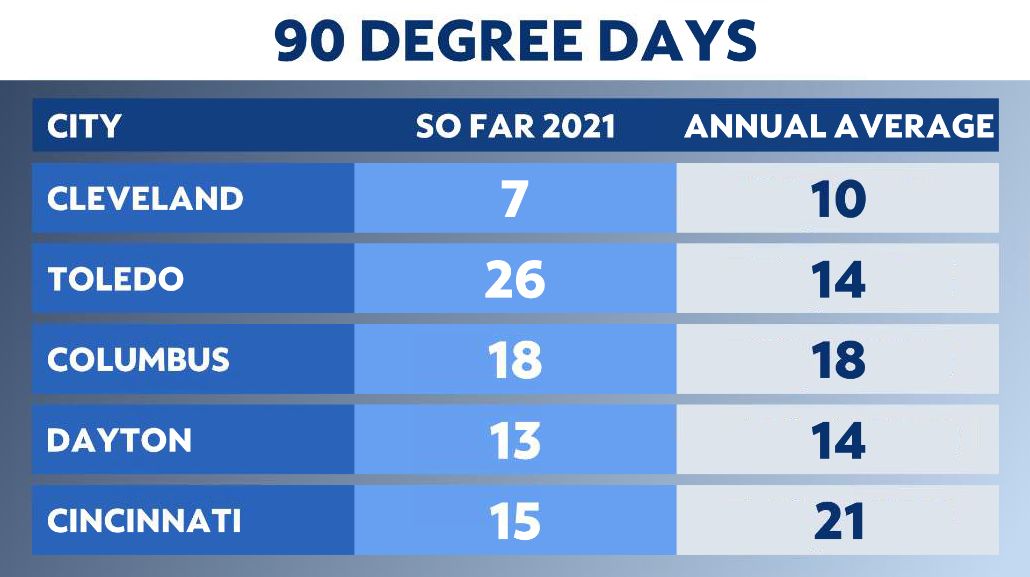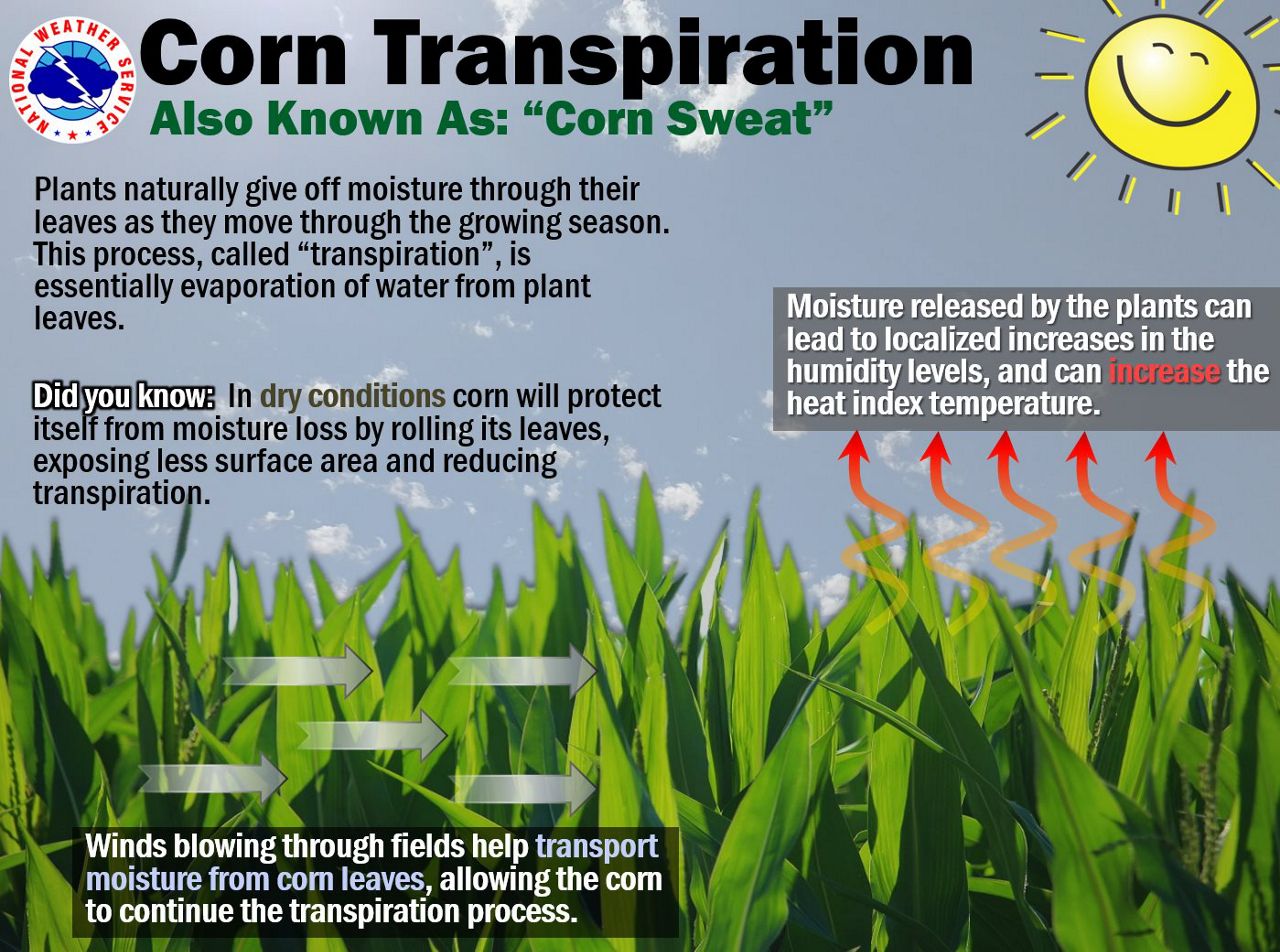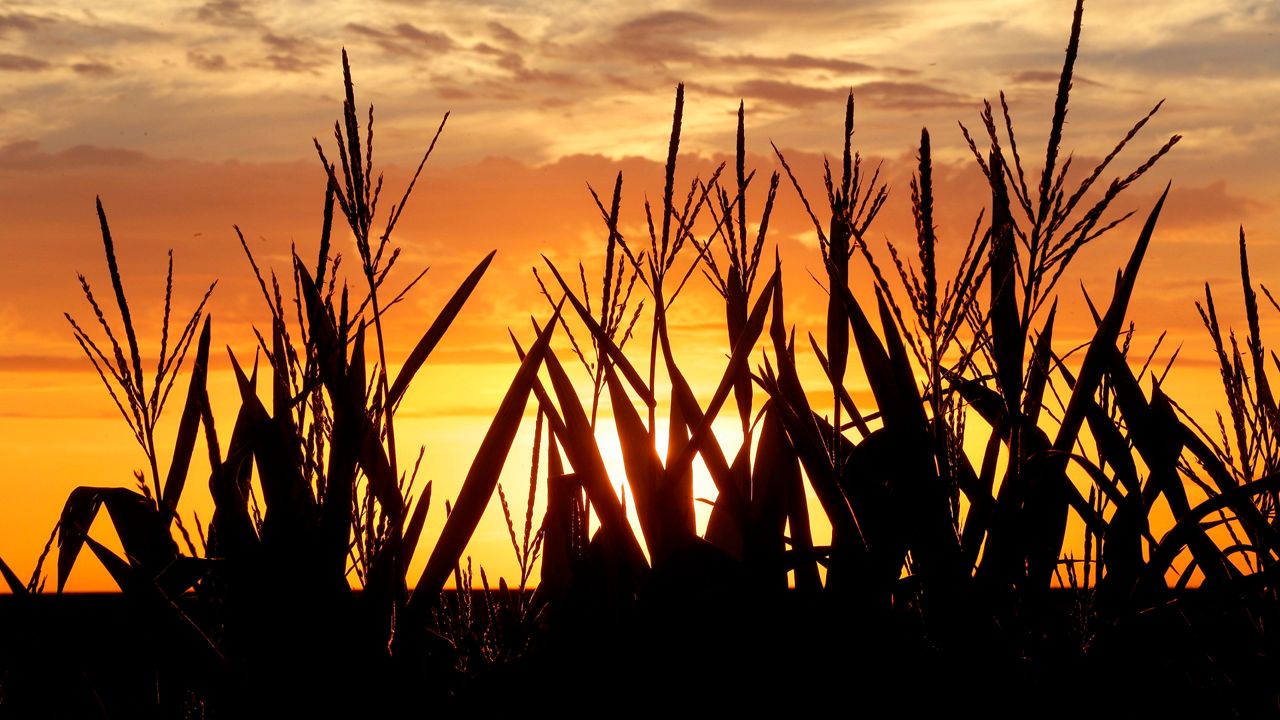Late August is typically hot and humid across much of the country, and this year has been no exception. While daytime highs have been around the 90s, we have not really broken any record high temperatures.
However, several Ohio cities have had record warm nights. Part of the reason for the warm nighttime temperatures is the high humidity.

For much of August, a large ridge of high pressure has been across the southeastern United States. The clockwise flow around the high has brought warm air and moisture right off the Gulf of Mexico up into the Ohio Valley.
You may have heard of the urban heat island that occurs around cities, including in Ohio. According to the EPA, many U.S. cities have air temperatures up to 10 degrees hotter than the surrounding natural land cover.
But what you may not know is the impact farm fields, especially corn crops, can have on the surrounding environment. Believe it or not, this time of year, maturing corn in the fields transpire – or "sweat" – and significantly increase in humidity.
I’m sure you were likely taught about the hydrologic cycle in science class back in grade school. Well, moisture in the air not only comes from evaporation from lakes, rivers and oceans, but also from plants in a process called evapotranspiration.

Across the Midwest and here in the Ohio Valley this time of year, we see lots and lots of corn. And yes, that corn can sweat, just like humans do. As air moves through the fields of corn, that moisture evaporates into the air.
Over the last few weeks, we have had several nights when fog has formed in areas where cornfields are located, yet not in the more urban areas. This is because the dew point is higher and air temperature is cooler. This leads to a quicker formation of fog, especially going into early fall as nights get longer.
According to the U.S. Geological Survey, during the growing season, just one acre of corn can sweat around 3,000 to 4,000 gallons of water per day. This moisture can add anywhere from 5 to 10 degrees to the dew point, which is a measure of moisture in the air. Dew points above 70 degrees are considered to be oppressive.
Over much of this week, the dew point across areas from Iowa to the Ohio Valley has soared into the 70s. A closer look has shown that the dew point at locations near agricultural areas, including corn fields, was running at least a few degrees higher. The humidity has allowed the heat index to soar into the low 100s across much of the region this week.



